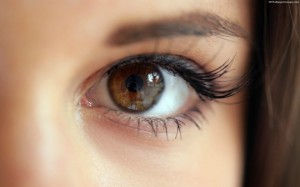In “Sex, Math, and Science,” Elizabeth Spelke and Ariel Grace claim that there are no differences between the mathematical abilities of men and women; however, there are gender schemas that discourage women from joining the field. When I was a child, many of my relatives and my parent’s friends commented on my long eyelashes. I felt so self-conscious of them that I asked my mom if I could trim them. She said no, of course, but I always felt like that was the only feature people noticed about me; I was not a fan of the attention it brought on myself.
Similarly, a study on parent’s opinions of their newborns suggests that parents often base their perceptions of the child on gender. For instance, parents more often refer to their baby girl as beautiful or pretty whereas a baby boy might be considered strong or intelligent. The newborns have yet to open their eyes and yet their parents are beginning to assign them an identity. Even though most parents have the best intentions, they may not realize that they are assuming that their child will adhere to the societal predispositions of gender. Spelke and Grace’s opinion aligns directly with that of Valian since both essays suggest that gender schemas play a major role in the difference between representation of men and women in mathematics.
Furthermore, Baron-Cohen theorizes that boys are more likely to be “systemizers” while girls are more likely to be “empathizers;” however, the authors of the essay disagree as evidence suggests that the claim is false (Spelke 58). Systemizers are defined as individuals who are more knowledgeable in aspects of objects and mechanical relationships. On the other hand, empathizers tend to sympathize with people and create relationships. Although this may be a solid hypothesis, Spelke and Grace illustrate that the claim is incorrect since various sources of evidence disprove the theory such as studies by Maccoby and Jacklin (Spelke 58).
Although the authors make the underlying assumption that biological factors do not play a role in affecting men and women’s abilities in mathematics, they provide an effective counterargument. They address the fact that there are biological differences in spatial, verbal, and mathematical abilities which is similar to Kumira’s argument in the second chapter, but they claim that both men and women have an advantage in some aspect of each category; however, some profiles may be “better suited to…performing high-level mathematics” (Spelke 60). In other words, it may be coincidental that some ways of solving problems may be more effective in testing situations, thus leading to the apparent difference in mathematical abilities.
In the conclusion of the essay, the authors suggest that scientists should be discouraged from allowing their innate opinions of gender to affect hiring decisions and evaluations of employee abilities. In addition, they explain that until gender discrimination is removed from the situation, it cannot be determined whether gender roles or inner motivation is the primary reason for the differences in men and women in mathematics.
Works Cited:
Close-Up Girl Eye Brown Images. Digital image. HD Wallpapers Images. N.p., n.d. Web. 11 Sept.
2015.
Elizabeth S. Spelke, Ariel D. Grace. “Sex, Math, and Science.” Why Aren’t More Women in
Science?: Top Researchers Debate the Evidence. Washington, DC: American Psychological
Association, 2007. Print.
